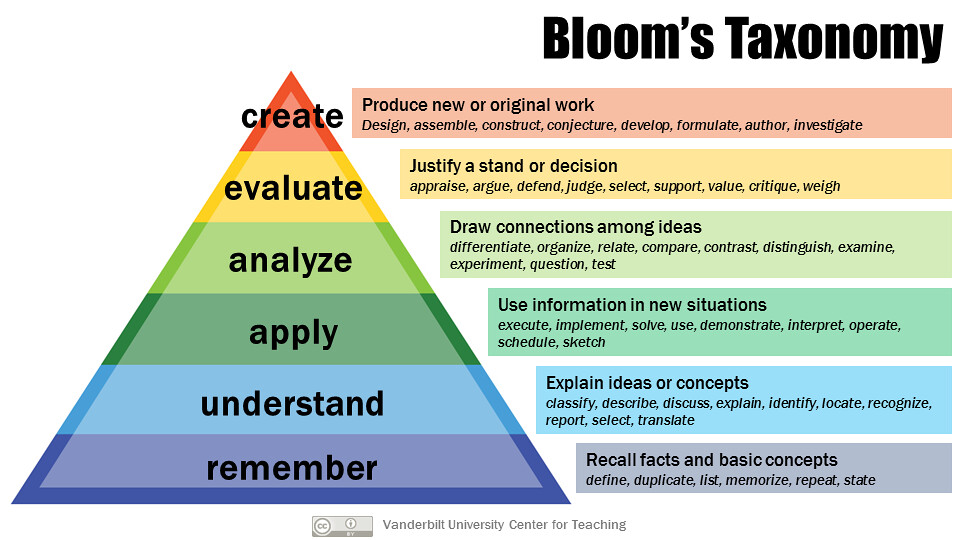An Overview of Active Learning
What is active learning?
Active learning involves engaging students as “producers” of learning; it is contrasted with passive learning where students are “consumers” of learning (Martin, 2010). When learning is passive, students generally use reading or listening skills (ex: reading a textbook or listening to a lecture). Active learning requires students to use high order thinking skills, or skills that appear higher up on the pyramid of Bloom’s taxonomy.

When engaged in active learning, students analyze, apply, and evaluate information. Information becomes more meaningful and personal for students because they engage with it in deeper and more relevant ways. Students are more likely to remember information and experiences when they engage with them, and active learning encourages this connection and interaction.
An important part of active learning is encouraging students to reflect and consider what, why, and how they are learning. This reflection should be intentionally designed so that students are prompted think about their learning and make connections.
What does active learning look like?
Many assume that active learning requires physical movement within a classroom space. This is not true, but physical movement can play a role in many active learning activities such as labs or on-the-job training. It is important to remember that, as noted above, active learning simply requires learners to meaningfully interact, connect with, and think about information and concepts. An example of active learning that does not require physical movement is responding to a prompt through writing or audio. Other examples of active learning include small-group activities that require students to discuss and debate topics, use classroom clickers or phone apps, and present on relevant topics demonstrating learning.
Can you identify examples of active and passive learning?
Complete the activity below by determining whether each activity is active or passive. This activity is, itself, an example of active learning as you, the learner, are engaging with the content rather than just reading about it.
To learn more about active learning, check out the links below:
- Active Learning – C. Brame from Vanderbilt University
- What is Active Learning? – McMaster University
- Why Active Learning is Important – McMaster University
- How can you incorporate active learning into your classroom? – University of Windsor
- Activities for Large Classes – University of Waterloo
- Learning Activities and Active Learning Online, UC Davis
References
Martin, J. (2011). Active Learning. Retrieved from https://cdm16120.contentdm.oclc.org/digital/collection/p15186coll14/id/566

